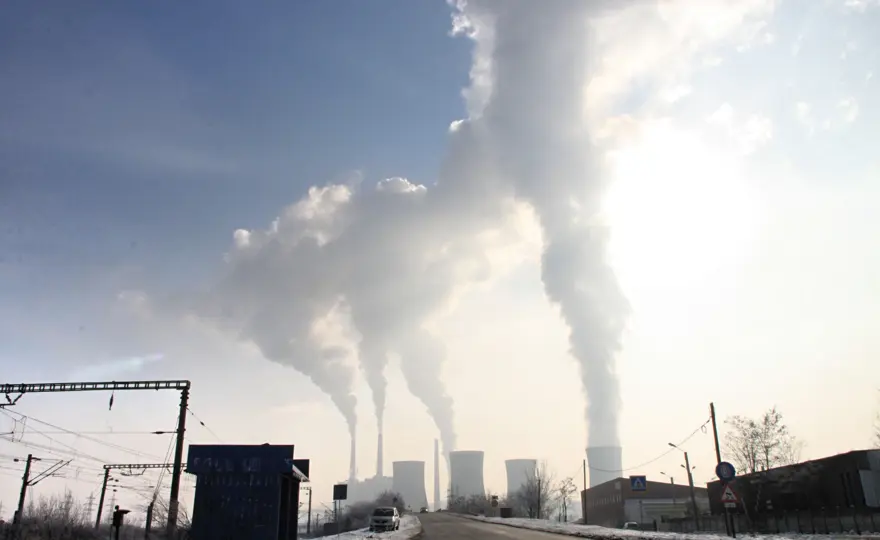ClientEarth Communications
7th March 2024


Legal analysis by Selin Esen, Lawyer, Emissions Reduction
Industrial pollution is not just an environmental issue – it is also a matter of health. The Industrial Emissions Directive (IED) regulates emissions into air, water and soil from more than 50,000 industrial installations across the European Union, making it a potentially impactful tool to address health effects of industrial pollution. On 18 December 2023, EU lawmakers provisionally agreed on a novel right for individuals to claim and obtain compensation (Art. 79a IED) when they suffer from health damage due to violations of national law transposing the IED. The IED compensation right is the first of its kind in EU environmental law. And it is initiating a new trend since the provisional political agreements on the revised Ambient Air Quality Directive and Urban Wastewater Treatment Directive also include compensation rights for individuals whose health is affected by pollution.
In theory, individuals in several member states could already claim compensation in such scenarios under the general tort law regimes. Some member states even have specific compensation rights in place for industrial pollution (e.g. Germany and Finland). However, the practice still falls short, as noted by the European Commission (recital 33): Victims of IED violations do not have an effective way to obtain compensation for the harm caused to their health. To remedy this, the agreed text explicitly states that victims must be able to “claim” and “obtain” compensation. Member States must design and apply rules regarding compensation claims in a way that the exercise of the right is not rendered impossible or excessively difficult.
In order to bring a successful claim under the IED compensation right, three elements have to be proven:
According to the European Commission, pollution can cause cancer, ischaemic heart disease, obstructive pulmonary disease, strokes, mental and neurological conditions, diabetes and more.
The entire range of IED obligations falling on the “relevant natural or legal persons”, i.e. operators of industrial facilities and Member States, can a priori be considered. Relevant violations by industrial operators may be the exceedance of emission limit values for critical pollutants or operating an installation without a permit altogether. Member States might be suitable defendants where authorities have not conducted any or only insufficient inspections or neglected to set essential public health-preserving permit conditions.
The most contentious element in future IED compensation cases will likely be the causal link. Courts may consider medical evidence, epidemiological studies, and/or statistical evidence associating the health condition at hand with the relevant pollutants. A difficulty may be how to assess situations of cumulative pollution from several sources.
By including the compensation right in the IED, the EU co-legislators are sending a signal to Member States and their courts to finally ensure that victims suffering from health damage due to illegal industrial pollution do not also have to bear the monetary costs themselves. While further specifications which had been proposed by the European Commission, such as an adapted burden of proof or collective action rules, are regrettably missing from the agreed text, the baseline remains: the IED compensation right must be effective in practice.
Member States can facilitate this in the transposition process by introducing presumption rules on the causal link. A good example is Section 6 of the German Environmental Liability Law, which allows to presume causation where an installation is likely to cause the damage that occurred on the basis of the facts of the individual case, such as the type and concentration of the substances used and released, operating procedures and facilities used. Similarly, Member States could foresee an adapted burden of proof, whereby once the claimant has made a prima facie case that their health damage was caused by the IED violation in question, the defendant has to show that their violation did not cause or contribute to the damage.
Courts in Member States should also follow the example of the European Court of Human Right in industrial pollution cases and make use of presumptions to establish the causal link where appropriate. For instance, the Court has considered it to be established that an individual was exposed to an elevated risk to their health on the basis of legal air quality limit value exceedances in the vicinity of a steel plant and reports on the influence of the air pollution on residents (see Pavlov v. Russia, para. 68). It will also be important that courts employ disclosure orders and similar tools to address the fact that claimants will usually have more limited access to information on the ongoings in an industrial installation than the defendant.
It is important to emphasize that the IED compensation right is not a threat to industry. Legal, albeit polluting activities will not give rise to compensation claims in any way. It is not a right for anyone to simply go to court and obtain payments. Instead, it constitutes a further incentive for industry and Member States’ authorities to comply with their existing IED obligations. If implemented effectively, the IED compensation right has the potential to boost compliance, reduce pollution and where necessary, ensure that individuals whose health is affected by illegal industrial pollution stand a true chance in court.